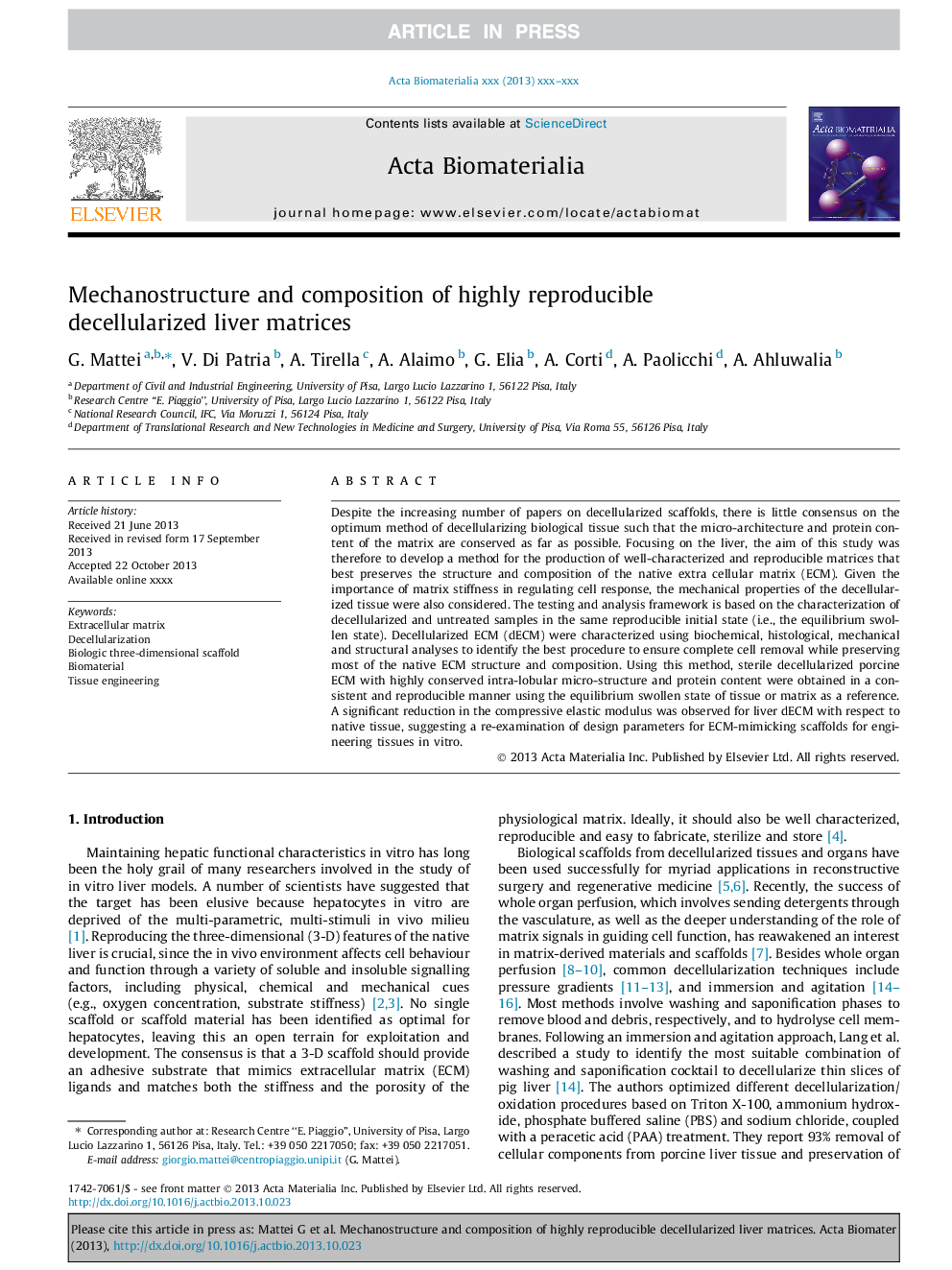| Article ID | Journal | Published Year | Pages | File Type |
|---|---|---|---|---|
| 10159354 | Acta Biomaterialia | 2014 | 8 Pages |
Abstract
Despite the increasing number of papers on decellularized scaffolds, there is little consensus on the optimum method of decellularizing biological tissue such that the micro-architecture and protein content of the matrix are conserved as far as possible. Focusing on the liver, the aim of this study was therefore to develop a method for the production of well-characterized and reproducible matrices that best preserves the structure and composition of the native extra cellular matrix (ECM). Given the importance of matrix stiffness in regulating cell response, the mechanical properties of the decellularized tissue were also considered. The testing and analysis framework is based on the characterization of decellularized and untreated samples in the same reproducible initial state (i.e., the equilibrium swollen state). Decellularized ECM (dECM) were characterized using biochemical, histological, mechanical and structural analyses to identify the best procedure to ensure complete cell removal while preserving most of the native ECM structure and composition. Using this method, sterile decellularized porcine ECM with highly conserved intra-lobular micro-structure and protein content were obtained in a consistent and reproducible manner using the equilibrium swollen state of tissue or matrix as a reference. A significant reduction in the compressive elastic modulus was observed for liver dECM with respect to native tissue, suggesting a re-examination of design parameters for ECM-mimicking scaffolds for engineering tissues in vitro.
Related Topics
Physical Sciences and Engineering
Chemical Engineering
Bioengineering
Authors
G. Mattei, V. Di Patria, A. Tirella, A. Alaimo, G. Elia, A. Corti, A. Paolicchi, A. Ahluwalia,
